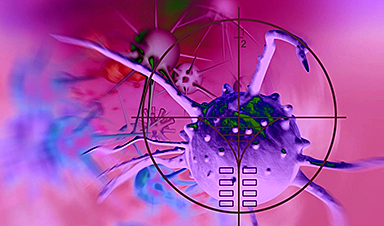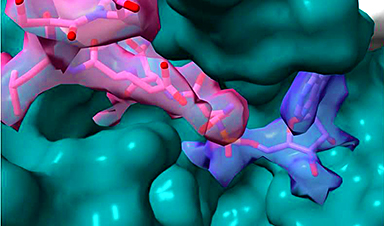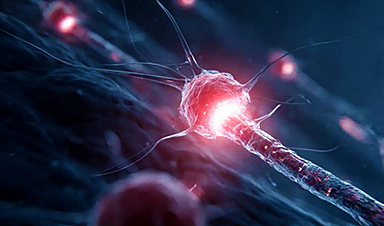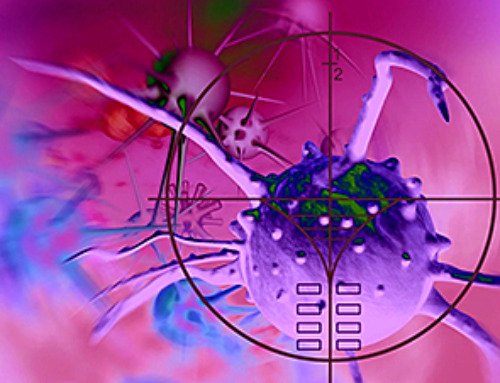Engineered nanomaterials (ENMs) have found their applications in various technologies and consumer products. Manipulating chemicals at the nanoscale range introduces unique characteristics to these materials and makes them desirable for technological applications.
With the increasing production of ENMs, there have been adverse effects on the environment. Moreover, it is unfeasible to estimate the risks caused by ENMs each time via in vivo or in vitro experiments. To this end, in silico methods can come to the rescue to perform such evaluations.
In an article published in the journal Chemosphere, the performance of different machine learning algorithms was investigated for predicting well-defined in vivo toxicity endpoint and to identify the important features involved with in vivo nanotoxicity of Daphnia magna.
The results revealed comparable performances of all algorithms and the predictive performance exceeded approximately 0.7 for all metrices evaluated. Furthermore, artificial neural network, random forest, and k-nearest neighbor models showed a marginally better performance compared to the other algorithm models.
The variable importance analysis performed to understand the significance of input variables revealed that physicochemical properties and molecular descriptors were important within most models. On the other hand, properties related to exposure conditions gave conflicting results. Thus, the machine learning models helped generate in vivo endpoints, even with smaller datasets, demonstrating their reliability and robustness.
Role of Machine Learning in Nanotechnology
Nanotechnology has emerged as a key technology with implications agriculture, medicine, and food industries. Thus, ENMs are more appealing than their larger counterparts due to their outstanding features owing to their smaller size.
Despite their advantages, ENMs have also caused effects on the environment, impacting the health and safety of the environment, calling for environmental risk assessment associated with ENMs. However, this assessment via in vivo or in vitro testing for all fabricated nanoforms is impractical.
The challenge in risk assessment is not only due to extensive ENM production and applications but also due to the large diversity of materials. To this end, chemical modification at the nanoscale range may modulate the physicochemical properties and consequential toxicity profile of the materials.
Recent advances in machine learning offered new tools to extract new insights from large data sets and to acquire small data sets more effectively. Researchers in nanotechnology use machine learning tools to tackle challenges in many fields. Due to their compatibility with complex interactions, machine learning can help predict the toxicological effects of ENMs through large data sets.
The field of nanotoxicology lacks standardized procedures to depict common ontologies to measure ENM properties. However, the models from limited datasets can help generate the key nanotoxicological descriptors. The nanotoxicological models based on machine learning developed to date focused on endpoints like viability or cytotoxicity.
In Silico Machine Learning Tools for The Prediction of Daphnia Magna Nanotoxicity
Despite considerable efforts, various obstacles still exist for in silico modeling of nanotoxicological effects due to limited data availability and poor data curation. Hence, better agreement on data quality, experimental protocols, and availability are vital to acquiring homogenous data across different studies.
In the present work, the performance of machine learning algorithms for predicting in vivo nanotoxicity of metallic ENMs towards Daphnia magna was investigated. Various models were generated based on the sources obtained from immobilization data, which were in congruence with the principles of organization for economic co-operation and development (OECD). Furthermore, the limitations in obtaining consistent data for modeling were overcome by applying different methods of data curation.
Among the six machine learning models generated based on OECD, neural network, random forest, and k-nearest neighbor algorithms showed the highest performance, while the other models showed relatively similar performance. This indicates that machine learning is more suitable for in silico modeling of in vivo nanotoxicity than the actual algorithm. Additionally, key descriptors that modulated the toxicity of metallic ENMs towards Daphnia magna were also studied based on the generated machine learning models.
Conclusion
To summarize, machine learning algorithms were performed to predict the in vivo nanotoxicity of metallic ENMs. The collected Daphnia magna toxicity data for metallic ENMs were analyzed using six classification machine learning models based on the principles of OECD.
The results revealed that artificial neural networks, random forest, and k-nearest neighbor algorithms had the highest performances, which were in line with previous reports from the literature. On the other hand, the relative differences in other algorithm models were comparatively small. These results proved the compatibility of machine learning for in silico modeling of in vivo nanotoxicity.
Furthermore, feature importance analysis using machine learning algorithms revealed contradictory results in all the models, with physicochemical properties and molecular descriptors being significant features within models. The results demonstrated that the models with small datasets with few physicochemical properties and molecular descriptors result in machine learning models with good predictive performance.
News
Repurposed drugs could calm the immune system’s response to nanomedicine
An international study led by researchers at the University of Colorado Anschutz Medical Campus has identified a promising strategy to enhance the safety of nanomedicines, advanced therapies often used in cancer and vaccine treatments, [...]
Nano-Enhanced Hydrogel Strategies for Cartilage Repair
A recent article in Engineering describes the development of a protein-based nanocomposite hydrogel designed to deliver two therapeutic agents—dexamethasone (Dex) and kartogenin (KGN)—to support cartilage repair. The hydrogel is engineered to modulate immune responses and promote [...]
New Cancer Drug Blocks Tumors Without Debilitating Side Effects
A new drug targets RAS-PI3Kα pathways without harmful side effects. It was developed using high-performance computing and AI. A new cancer drug candidate, developed through a collaboration between Lawrence Livermore National Laboratory (LLNL), BridgeBio Oncology [...]
Scientists Are Pretty Close to Replicating the First Thing That Ever Lived
For 400 million years, a leading hypothesis claims, Earth was an “RNA World,” meaning that life must’ve first replicated from RNA before the arrival of proteins and DNA. Unfortunately, scientists have failed to find [...]
Why ‘Peniaphobia’ Is Exploding Among Young People (And Why We Should Be Concerned)
An insidious illness is taking hold among a growing proportion of young people. Little known to the general public, peniaphobia—the fear of becoming poor—is gaining ground among teens and young adults. Discover the causes [...]
Team finds flawed data in recent study relevant to coronavirus antiviral development
The COVID pandemic illustrated how urgently we need antiviral medications capable of treating coronavirus infections. To aid this effort, researchers quickly homed in on part of SARS-CoV-2's molecular structure known as the NiRAN domain—an [...]
Drug-Coated Neural Implants Reduce Immune Rejection
Summary: A new study shows that coating neural prosthetic implants with the anti-inflammatory drug dexamethasone helps reduce the body’s immune response and scar tissue formation. This strategy enhances the long-term performance and stability of electrodes [...]
Scientists discover cancer-fighting bacteria that ‘soak up’ forever chemicals in the body
A family of healthy bacteria may help 'soak up' toxic forever chemicals in the body, warding off their cancerous effects. Forever chemicals, also known as PFAS (per- and polyfluoroalkyl substances), are toxic chemicals that [...]
Johns Hopkins Researchers Uncover a New Way To Kill Cancer Cells
A new study reveals that blocking ribosomal RNA production rewires cancer cell behavior and could help treat genetically unstable tumors. Researchers at the Johns Hopkins Kimmel Cancer Center and the Department of Radiation Oncology and Molecular [...]
AI matches doctors in mapping lung tumors for radiation therapy
In radiation therapy, precision can save lives. Oncologists must carefully map the size and location of a tumor before delivering high-dose radiation to destroy cancer cells while sparing healthy tissue. But this process, called [...]
Scientists Finally “See” Key Protein That Controls Inflammation
Researchers used advanced microscopy to uncover important protein structures. For the first time, two important protein structures in the human body are being visualized, thanks in part to cutting-edge technology at the University of [...]
AI tool detects 9 types of dementia from a single brain scan
Mayo Clinic researchers have developed a new artificial intelligence (AI) tool that helps clinicians identify brain activity patterns linked to nine types of dementia, including Alzheimer's disease, using a single, widely available scan—a transformative [...]
Is plastic packaging putting more than just food on your plate?
New research reveals that common food packaging and utensils can shed microscopic plastics into our food, prompting urgent calls for stricter testing and updated regulations to protect public health. Beyond microplastics: The analysis intentionally [...]
Aging Spreads Through the Bloodstream
Summary: New research reveals that aging isn’t just a local cellular process—it can spread throughout the body via the bloodstream. A redox-sensitive protein called ReHMGB1, secreted by senescent cells, was found to trigger aging features [...]
AI and nanomedicine find rare biomarkers for prostrate cancer and atherosclerosis
Imagine a stadium packed with 75,000 fans, all wearing green and white jerseys—except one person in a solid green shirt. Finding that person would be tough. That's how hard it is for scientists to [...]
Are Pesticides Breeding the Next Pandemic? Experts Warn of Fungal Superbugs
Fungicides used in agriculture have been linked to an increase in resistance to antifungal drugs in both humans and animals. Fungal infections are on the rise, and two UC Davis infectious disease experts, Dr. George Thompson [...]





















